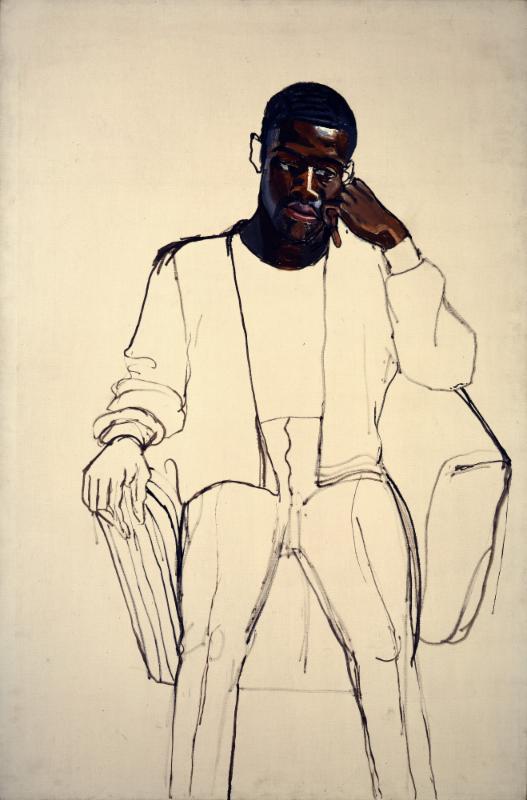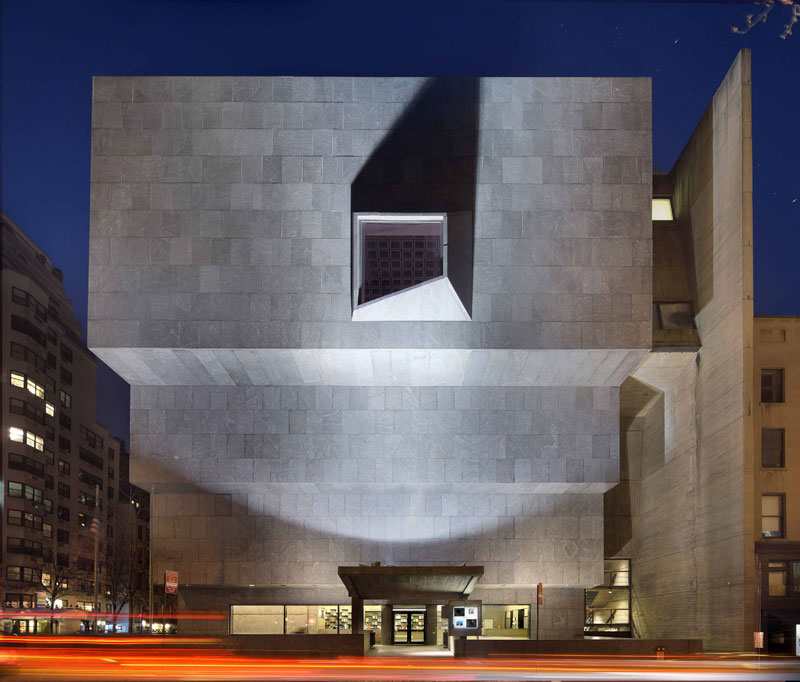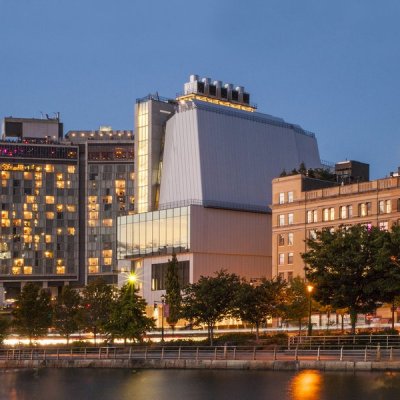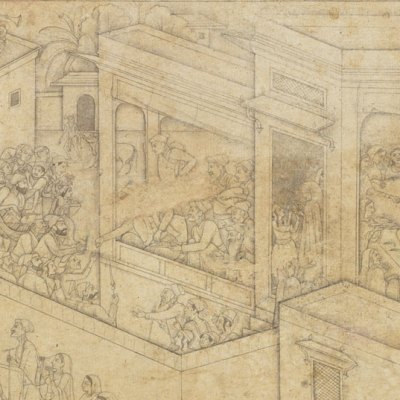The Metropolitan Museum of Art now has three venues in New York. The Met Fifth Avenue is the headquarters for the vast, ever-expanding encyclopaedic collection that is bursting out of its neoclassical halls (British architect David Chipperfield is seeing to that problem with a major renovation project). Then there are the Met Cloisters in north Manhattan, where cultural pilgrims admire medieval art displayed in an assemblage of monastic buildings. Finally, as of 18 March, there is the Met Breuer, a stark but shapely inverted ziggurat on Madison Avenue at 75th Street, that was completed in 1966 and previously housed the Whitney Museum’s collection.
The Breuer is fresh and distinct. It speaks directly to the visitor and its exhibitions may well set a new blueprint for the museum. As it is named after its architect, Marcel Breuer, let’s first address the building. It has been cleansed of some of the drab accretions it acquired during its Whitney years: now, its elegant waxed floors of Pennsylvania bluestone, its Breuer-designed lighting, and its suspended grid ceilings can be properly shown off. Original gallery spaces have been reclaimed and Breuer’s reading room has been reinstated so visitors can pause, read, and relax. As Sheena Wagstaff, Chairman of the Department of Modern and Contemporary Art, explains: ‘This guy was making an exposed plant before Piano and Rogers were at the Pompidou’.
James Hunter Black Draftee (1965), Alice Neel. Image courtesy of COMMA Foundation, Belgium, © The Estate of Alice Neel, Courtesy David Zwirner, New York/London

The Met Breuer houses modern and contemporary programmes in relation to the Met’s entire collection (and in addition to the existing initiatives at Fifth Avenue). But beyond that its purpose has been a bit fuzzy in the eyes of the public ever since it was first announced (as has its pronunciation, which should be ‘broyer’, as in a broiler chicken – as director Tom Campbell corrected me firmly when I got it wrong). Indeed, Wagstaff says that ‘in many ways we are experimenting.’ But one achievement is already apparent from the two opening exhibitions. The Met Breuer obliges visitors to engage with both displays: it encourages them to look closely and delve deep to come up with their own opinions about art-historical works and decide to what extent they are precursors to the present; and it asks them to look and think about 20th-century art in a global context. The idea of a didactic museum show is turned on its head.
The larger of the two exhibitions is ‘Unfinished: Thoughts Left Visible’, a disparate and somewhat perplexing assembly of European and American pictures in different media, some rarely seen in public before. Roughly 50 per cent are from the Met collection and the other half are loans. Together, Wagstaff and her colleagues from other Met departments pose the questions: When is a work of art finished and who decides this? Do artists intentionally experiment with the ‘unfinished’? And how might this have influenced modern and contemporary artists? A cynical definition of ‘unfinished’ might be when the artist dies mid-creation (quite a few pictures on view – by El Greco, Turner, Klimt, Freud, Twombly, and others – fall into this category). But as each picture has its own story, the questions are in fact provocative. The visitor is put to work: during a Met members’ preview, brows were furrowed, concentration intense, chat minimal.
Untitled (c. 1975), Nasreen Mohamedi. Image courtesy of the Sikander and Hydari Collection

The Met’s second, more accessible show plunges the visitor into the mid 20th-century global art ferment. It is a remarkable gathering of exquisite yet robust photographs and drawings by Nasreen Mohamedi. A thoroughly international artist, she was born in the pre-independence port-city of Karachi (now in Pakistan) in 1937 and instilled with classical North Indian culture. She then attended Central Saint Martins in London, travelled widely in Europe, the Middle East and the US, and spent time on the sandy beaches south of Mumbai while teaching at the university of Baroda in western India – the birthplace of modern Indian art from Raja Ravi Varma onwards, and still a fountainhead for many of today’s dynamic Indian artists.
All this she distilled in her work. Engaged with abstraction early on, it soon became a preoccupation for the artist. At first it is more evident in her photographs, which are usefully exhibited with her drawings for the first time. Then she seems to hover between both mediums, enjoying both the instant reward of the acutely observed photograph, and the painstaking process of her drawings. It is the drawings that finally triumph with their formidable mix of rigour and delicacy. Some float on the page like a gossamer veil. They are infused with the rhythm of a Bridget Riley, the playfulness of Piet Mondrian and the lyricism of an Ellsworth Kelly line leaf drawing – Mohamedi’s diaries reveal she saw his work in Washington. Like him, she was permanently preoccupied by the essence of line and shape.
Untitled (c. 1972), Nasreen Mohamedi. Kiran Nadar, Museum of Art, New Delhi

When you visit the Mohamedi exhibition, don’t forget to enjoy the polished wooden floor. It is the only one in the building, laid by Breuer at the behest of Gertrude Whitney so she could hold tea dances for her friends between art shows. The historical is always present in the contemporary.
The Met Breuer opens on 18 March. ‘Unfinished: Thoughts Left Visible’ runs from 18 March–4 September; ‘Nasreen Mohamedi’ runs from 18 March–5 June.



